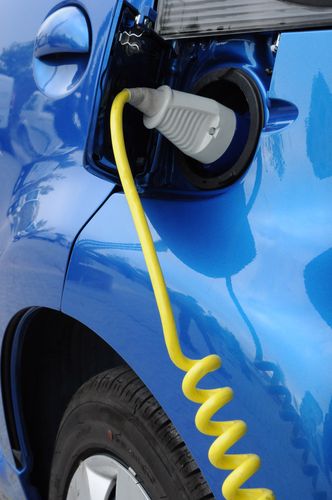
Bidirectional charging powers EV innovation
By Max BurkhalterApril 26, 2022
Automakers around the world are committed to the future of electric vehicles (EVs). Bidirectional charging is one of the newer efforts in attempts to improve the capabilities of charging technology.
Named for the ability to give stored battery power back to a home or power grid, this EV feature presents opportunities for vehicles to contribute to the sustainability of their community. This internet of things- (IoT) assisted technology is furthering the sustainability benefits of EV infrastructure.
IoT assistance
IoT connectivity allows communication between smart devices via an array of sensors and processing technologies. EV charging stations equipped with IoT-enhanced software are contributing to bidirectional charging functions in San Diego.
As reported by Charged Electric Vehicle Magazine, vehicle-to-grid (V2G) company, Nuvve has partnered with smart charging brand IoTecha to commercialize a bidirectional solution in the city. The partnership utilizes IoT tech by integrating over-the-air software updates to their charging stations, which allow a two-way power transfer for docked vehicles.
The Nuvve/IoTecha partnership updates regularly to ensure compliance with ever-evolving industry regulations. The union allows precision metering and diagnostic capabilities via an array of IoT sensors equipped aboard each charging station. The ability for parked EVs to transfer power back to the grid once sensors determine a max-charge has been attained makes the partnership a welcome one by the city of San Diego.

The wheels on the bus
One of the pilot projects of the Nuvve/IoTecha partnership involves a fleet of electric school buses. EV buses make for ideal bidirectional charging candidates due to the long periods of inactivity between routes. Theoretically, an EV could perform its transportation duties in the morning and then dock at an IoT-powered bidirectional charging station for the better part of the school day. This initiative will see the buses supply power back to the grid before returning to pick up children after classes are finished.
Bringing the charge home
Home charging wallbox units are seeing technological advancements alongside the EVs they power. The 2022 Consumer Electronics Show (CES) debuted the Wallbox Industries Quasar 2, a home unit dedicated to bidirectional charging for the North American market.
Boasting IoT connectivity via smartphone access and facial recognition software, the latest wallbox units contain functionality that enables consumers to control both the charge and discharge of their EVs' power.
By providing 11.5 kilowatts of energy, the latest bidirectional charging stations mark a significant boost over the 7.4 kilowatt standard of older models. The units are programmable and allow vehicle owners to take advantage of off-peak time charging schedules.
At home or at work, the latest bidirectional charging initiatives are aimed at increasing vehicle efficiency while simultaneously supporting the push for environmental sustainability.
Perle solutions
Perle is working on technology tools that can assist industries seeking to advance transportation innovation. Read about our Intelligent Transportation Solutions (ITS) to learn how Dynamic Message Signs are impacting the road ahead.



